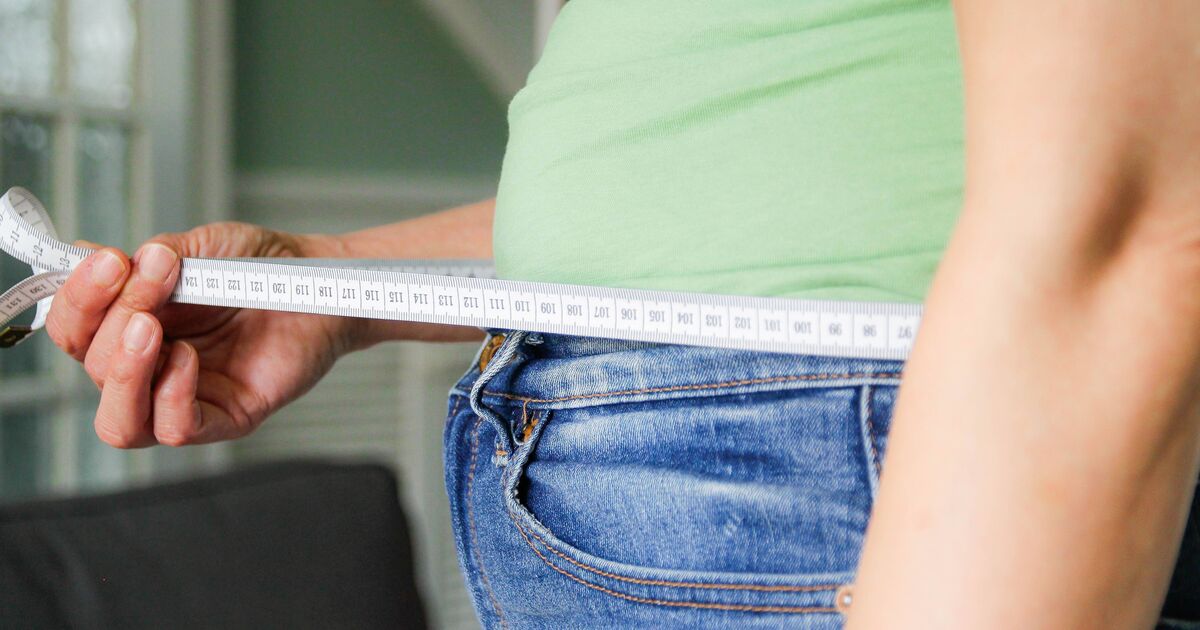
Results were found to be even better for women (Image: Kinga Krzeminska via Getty Images)
A new study has left scientists astounded after it was discovered that New Zealand blackcurrant extract, known as CurraNZ, can boost fat burning by up to 200%, with women who have higher body fat experiencing even more pronounced effects. This superfruit not only turbocharges weight loss but also offers significant cardiovascular advantages by potentially lowering blood pressure post-exercise by as much as 11%.
In the research, the first of its kind to make such comparisons, CurraNZ was shown to increase fat oxidation in participants by an average of 28%, with the top male and female responders recording increases of 204% and 216% respectively.
Dr Matthew Cook, the lead researcher of the study, hailed the findings as a ‘watershed moment’ for blackcurrant studies, stating: “The message is clear, we have proof of principle that New Zealand blackcurrant extract is powerful and reliable for increasing fat metabolism and reducing cardiovascular disease risk factors, such as blood pressure.
“We’ve shown here that women who carry more fat, have the highest magnitude of change to blackcurrant. The great news is that it works for everyone, and some people respond more highly. This a high-impact discovery from a large dataset that had excellent controls.”
Brimming with cardio-metabolic and anti-obesity properties, blackcurrant extract is now being hailed by experts as a possible natural daily remedy for Type 2 Diabetes, potentially giving pricy medications a run for their money. Astonishingly, just a week’s intake of this berry supplement made subjects burn an extra 3.6 grams of fat during an hour-long workout, which translates to around 72 grams of fat each month if exercising five times weekly – that’s more than five tablespoons of butter.

A doctor said it worked for everyone (Image: Pexels)
Such enhanced fat oxidation typically emerges only after relentless months or years of endurance training, yet the supplement also significantly lowers blood pressure, thus magnifying the cardiovascular advantages of regular physical activity.
Dr Cook highlighted the potential impact: “If you can increase fat burning during exercise, over a prolonged period of time, that could equate to greater fat loss. Applied to a population doing an exercise training program with high polyphenol intake with blackcurrant would have really important health implications.”
In an era where anti-diabetic meds are increasingly used for sustained weight control, Dr Cook posits that this revelation puts high-anthocyanin blackcurrant extract on the map as an enticing substitute to weight reduction injections, offering a safe, economical alternative free from perilous side-effects.
He stated: “A high anthocyanin blackcurrant supplement is an affordable, fast-acting intervention that is easy to use, doesn’t require a prescription, is very safe and a valuable tool for weight management. Not only that, it improves insulin responses, cardiovascular health and lowers risk factors associated with Type 2 Diabetes and heart disease.”
The berry rich in anthocyanin is increasingly being seen as a potent daily superfood to incorporate into one’s diet, thanks to its quick-acting, varied health benefits of clinical significance.

Researchers were impressed with the results (Image: Pexels)
Post-exercise reactions
Dr Cook was taken aback by the post-workout blood pressure reactions, noting: “We observed that blackcurrant further decreased resting blood pressure values by up to 11% in the two hours after exercise. Blood pressure is the pressure that our blood puts on our arteries. We need a certain amount to keep blood flowing, however, if it is too high it can cause health problems. We measure blood pressure with a cuff on the arm and healthy blood pressure is 120/80 mmHg.
“The higher number is our systolic pressure and is the pressure on arteries when the heart is pumping blood, and the lower number is diastolic pressure is the pressure in the arteries when the heart is relaxed between beats. Every 5mmHG reduction in systolic blood pressure is equivalent to lowering the risk of cardiovascular events by 10% in adults over 60, however in the present study we saw reductions of up to 12mmHG – or 11%, in young healthy males and females.”
Researchers have unearthed compelling evidence that taking blackcurrant supplements can significantly lower blood pressure, rivalling the effects of conventional medication. “These values are comparable to what a doctor would seek to achieve through prescribing blood pressure medications to their patients. This is really meaningful after just one week on blackcurrant – a fantastic finding.
“It would be worth repeating the study and extending the testing window, because post-exercise hypotension can occur for 12-24 hours before returning to baseline. It would be good to see blackcurrant’s effect over this longer period.”
The same expert also advocated for daily intake of blackcurrant anthocyanins based on health benefits: “There is no question blackcurrant anthocyanins can deliver meaningful physiological health benefits and should be implemented as a daily dietary strategy for life – particularly for those at risk. It’s clear that as a population, we don’t exercise enough, or consume enough fruits and vegetables containing these high-value phytochemicals and nutrients. Consuming a nutritional supplement like blackcurrant extract shows that within a short space of time, high doses of anthocyanin can deliver measurable, repeatable benefits that can modify health outcomes.”
About the study
The study observed a vast pool of healthy individuals with typical blood pressure levels, balanced between males and females, who ingested 600mg of CurraNZ blackcurrant extract for a week. All variables, including the female participants’ menstrual cycles, were carefully controlled.
Two hours after their final dose, the participants underwent 60 minutes of moderate treadmill exercise. During this period, their energy metabolism, including fat and carbohydrate use, was measured.
Additionally, their blood pressure responses were monitored at rest in the two hours following the treadmill test.

